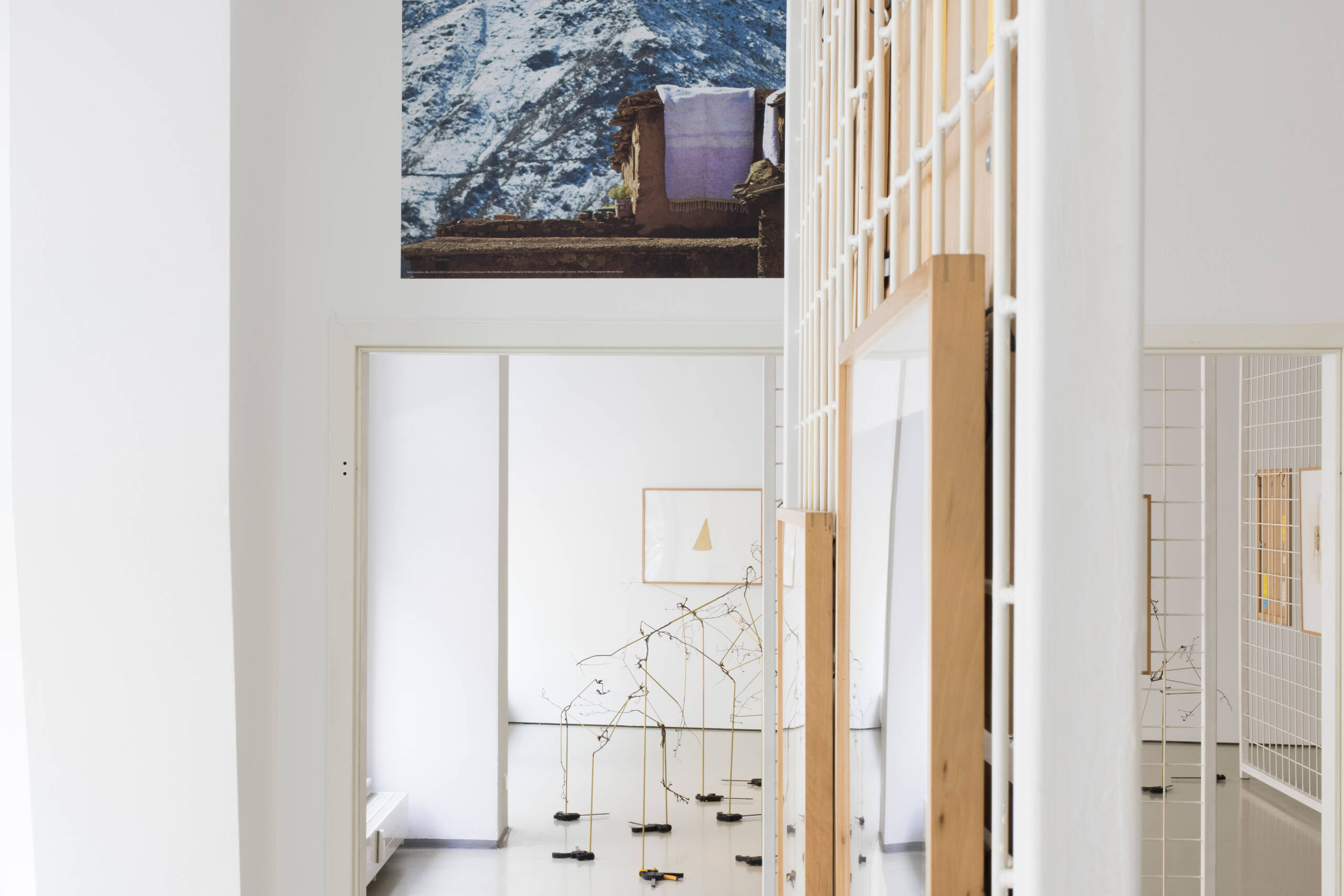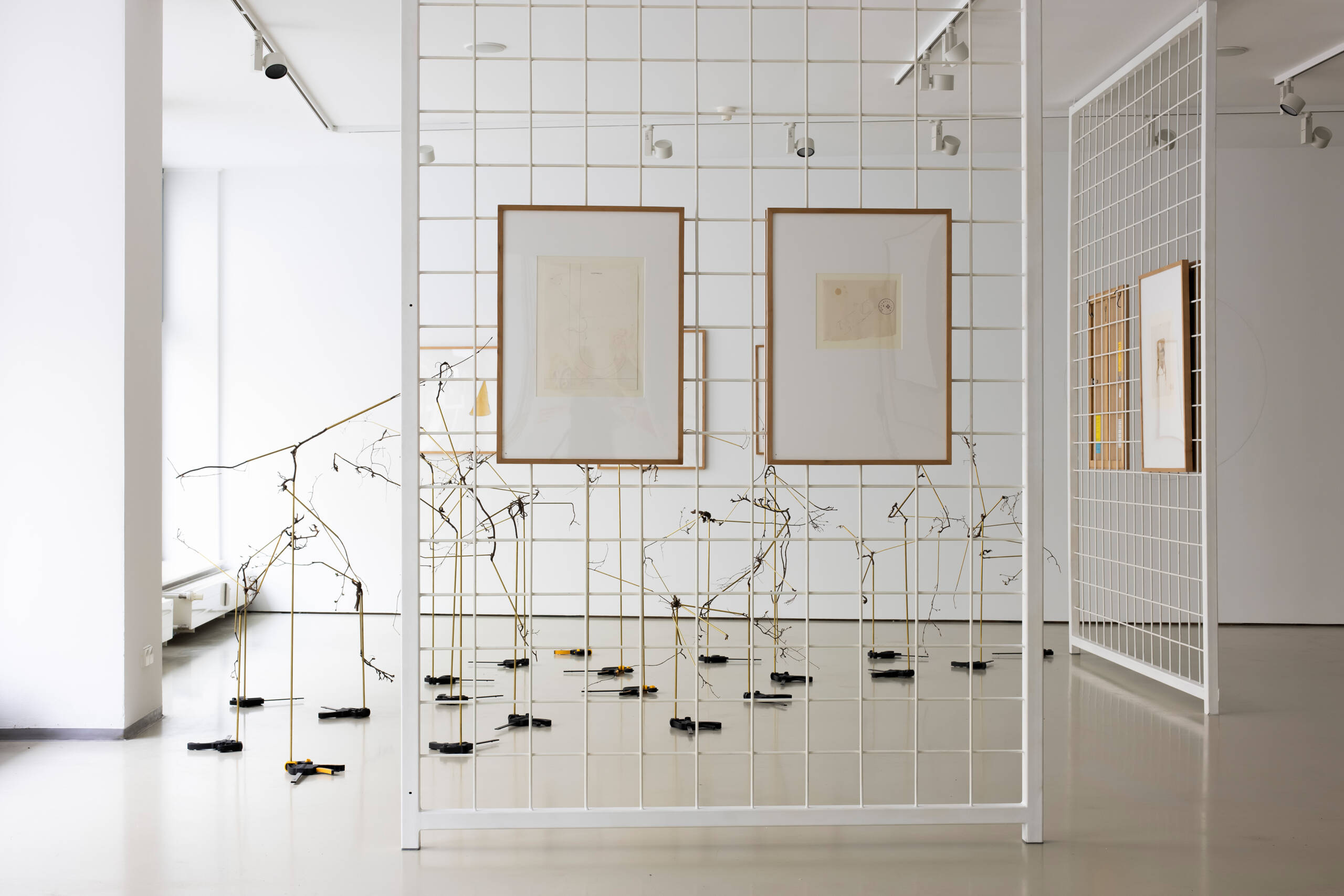To mark the 100th anniversary of his birth, ifa Gallery Berlin is presenting drawings by Joseph Beuys from the ifa collection in dialogue with the artistic positions of Andrea Acosta, Anne Duk Hee Jordan and Sara Ouhaddou. Both Beuys and the featured artists address overlooked, disregarded, handed-down forms of – often collective – knowledge.
Are prophecies akin to interpretations, memories, sketches or schematic images? What do they tell us? Do they unlock new realms in which we can think and act? Such questions form the starting point of the exhibition Notes of a Seeress, which takes its name from a 1958 drawing by Joseph Beuys.
Based on the relationship to found materials, they use humorous, poetic and social gestures to examine economic and ecological issues, initiating processes that have the potential to effect lasting societal change. The exhibition unifies four artistic perspectives into a singular spatial and mental cosmos that comments on the social and aesthetic shifts in contemporary society and the potential dialogues they give rise to.
Curated by Susanne Weiß & Inka Gressel
Andrea Acosta creates hybrid works using found objects. Starting from a small detail or a tactile experience, she composes fragile installations that incorporate drawings, photographs and sculptures. Like a fieldworker she collects leaves, twigs, roots and other natural fragments in the urban space that she later reassembles into new constellations. In her installation Assisted Forest, she uses ‘prostheses’ in order to grant broken twigs a second life. Can the sum of the parts make up a whole again? Acosta’s artistic practice spins a web of technical and organic elements that explores the possibilities of coexistence, togetherness and tension in the urban realm.
Joseph Beuys‘ graphic work reflect the immediacy of the connection between mind and body in space. In it he found an experimental domain for the interconnectedness of the material and the immaterial and developed his sculptural way of thinking as well as his open concept of work. He created drawings full of dynamism, repetition, of empathetic vision – the core of his artistic and political activity: “I can only say that if I had not done all these drawings, I could not have done my political work.” * Beuys left an indispensable imprint as an artist, storyteller, teacher and activist. He was an instigator, an animator, an agitator, a provocateur, a modifier – he was unwavering.*(quoted from Götz Adriani, 1989/2002)
Anne Duk Hee Jordan investigates the complex dialogue between things – whether conscious, animate, processed or malformed. Mischievously creating ecosystems like a trickster, she immersively negotiates motives of transformation and transience. Her drawings free time and space from their static components and present vividly coloured counterpositions that offer new perspectives on the myth of the explorer or depict the ecological state of the earth and its oceans – like the exotic, queer sea-dwellers that change and mutate in the face of global climate change. Her mechanical works transform objects such as stones and fossils into performative machines, kinetic sculptures that rhythmically reverberate the physical qualities of their materials.
Sara Ouhaddou transposes overlooked cultural realities and knowledge repositories into new patterns, alphabets and narratives. In her series Woven/Unwoven series, she used discarded rubber mats as a foundation upon which she created new designs. Embroidery that once adorned noble robes is transformed through a collective creative process by young women from Tétouan, thus feeding it into a new cycle. “Al Kalima” means “words” in Arabic: The series of drawings form studies for the glassmaking trade in Marrakech, a craft threatened by extinction; at the same time they bring to mind calligraphy, whose abstraction opens up new languages and their respective universes.















